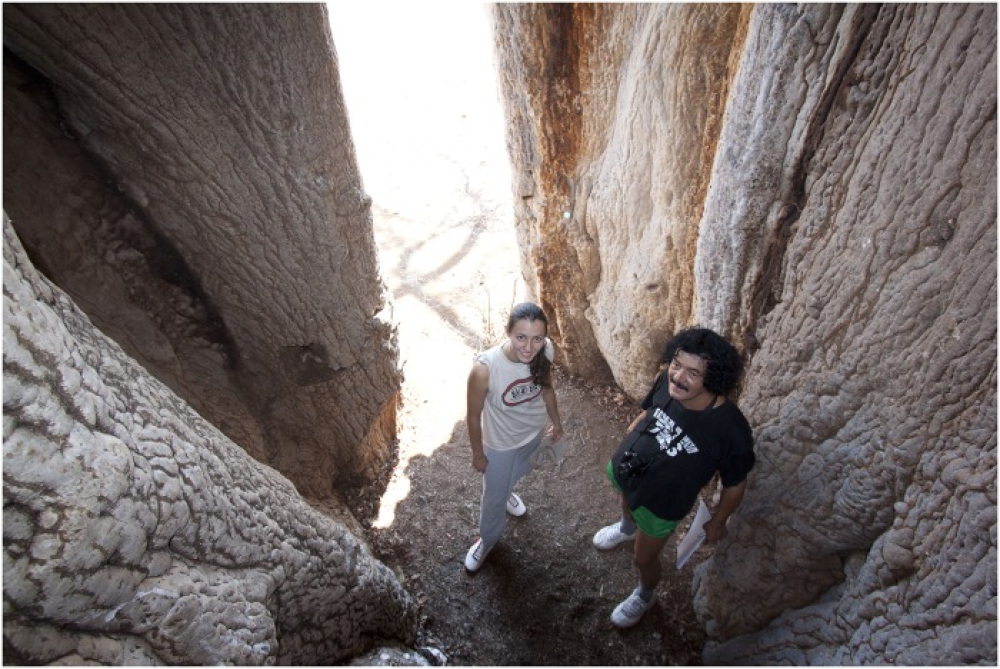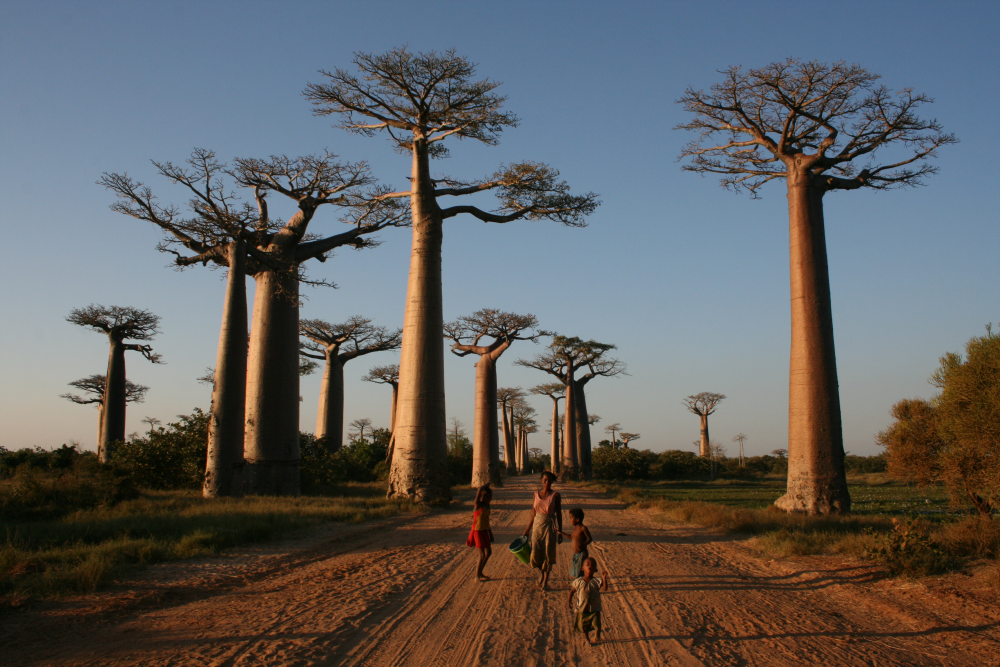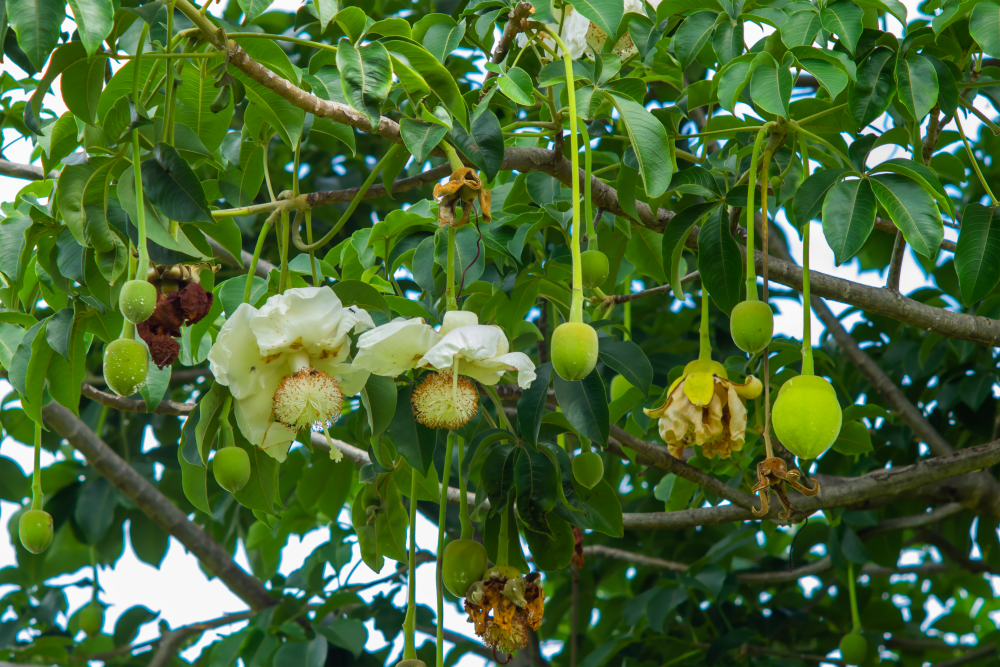The baobab tree looks almost alien in the modern environment, and no wonder, considering these plants first emerged around 200 million years ago when dinosaurs were making their debut. Hailing from the genus Adansonia, they have captivated humans for thousands of years, with records of Homo sapiens’ appreciation for baobab trees dating back 2,300 years to the ancient Egyptians.
The baobab tree
There are eight distinct species of baobab tree that can be found in Australia, across Africa, southwest Asia, and Madagascar. One theory as to why they can be found in such a wide range of places is because they existed before the supercontinent Pangea split up – that’s how old they are.
All but A. digitata are threatened to some degree, with A. perrieri being critically endangered, which got scientists eager to better understand their genetics in order to safeguard their future. They conducted chromosomal-level genome assemblies for all eight baobab trees to uncover the evolutionary history of the Adansonia genus, including its origin, diversification, and the instances of baobab tree hybrids popping up.
It revealed that the species’ niches were shaped by the temperature, altitude, and amount of rainfall of the geographic locations they ended up in. Their distribution has seen them develop different flowering times, which has been a key reproductive barrier, but that didn’t stop hybridization events from occurring among baobabs in Madagascar – a place that’s likely the origin of baobab trees based on gene flow patterns between the plants found here and other species.

Unlike cavities formed by wood being taken away, the false cavities of baobab trees are thought to be the natural result of stems growing in a ring-like loop fusing together.
The baobab tree’s unique way of growing is thought to contribute to its incredible longevity, as a radiocarbon investigation concluded that some of the oldest and largest trees develop natural empty spaces between fused stems called false cavities. These girthy trunks can hold a lot of water for surviving the dry season, and the spaces are so big that humans can pose for a photo or even set up a wine bar inside them.
As for how long they can live, trees radiocarbon dated along the Lebombo Eco Trail had ages of around 1,400 years, while some estimate they could live to be as old as 3,000 years. When the time finally comes for the baobab to kick the proverbial bucket, they rot from the inside and collapse.
The queen of the baobab trees
The giant baobab tree Adansonia grandidieri is known locally as “renala”, which is Malagasy for “mother of the forest”. Such trees line the Avenue of the Baobabs, which can be found between Morondava and Belon’i Tsiribihina in the Menabe region of Madagascar.
This variety of baobab tree can grow to dizzying heights of 25 to 30 meters (82 to 98 feet), but while some are tall and slim, some resemble “overweight dwarves” with trunks wider than they are tall. They also demonstrate why baobab trees are known as “upside down trees,” as their broad and bare trunks look as if they should be buried underground, like a giant tuber. Meanwhile, the wiggly branches at the top of the tree look like roots – especially when the leaves are shed during the dry season and the baobab looks like it’s waving its roots in the air (like it just don’t care).

Without their leaves, the baobab tree looks upside down with its roots in the air.
Baobab tree fruit
Baobab tree fruit is known as monkey bread and the Ethiopian sour gourd, and it’s a whopper. It can grow to be around a foot long with a woody exterior and squishy pulp-like center.
According to Michigan State University, the flavor of baobab tree fruit has been compared to a combination of grapefruit, pear, and vanilla. Baobab tree fruit is prepared by being left to dehydrate under the heat of the Sun, becoming a powder that can be used in drinks, ice cream, and baked goods.
The fruit of baobab trees has become a big industry in recent years, as there are several companies eager to buy them, harvest the fruit powder for the food industry, and crush up the seeds to extract oil. The oil is coveted by the cosmetics industry, while the bark is good for making rope, and the fruit is rich in vitamin C.

The peculiar flowers of baobab trees are pollinated by nocturnal creatures like insects and bats.
Image credit: Daolauong Kamkhom/Shutterstock.com
Baobab tree pollinators
Of course, the baobab tree fruit would be nothing without pollinators. Despite being hermaphrodites, research has shown that baobab trees can’t produce fruits without pollen from another tree, and when they unleash their large pendulous flowers at night, the pollinators only have until the following morning to get in there and do their job.
Baobab tree nectar lures in a range of pollinators, but in southern Africa, it’s predominantly insects like the hawk moth, while elsewhere on the continent, bats are the key pollinators. By moving from tree to tree, these nocturnal critters can facilitate fruit production for baobab trees.
Just goes to show that whether your might is in your height or girth, even Earth’s giants can’t get by without a helping hand from the little guys.
Source Link: This 200-Million-Year-Old “Upside Down Tree” Can Live For Over 1,000 Years